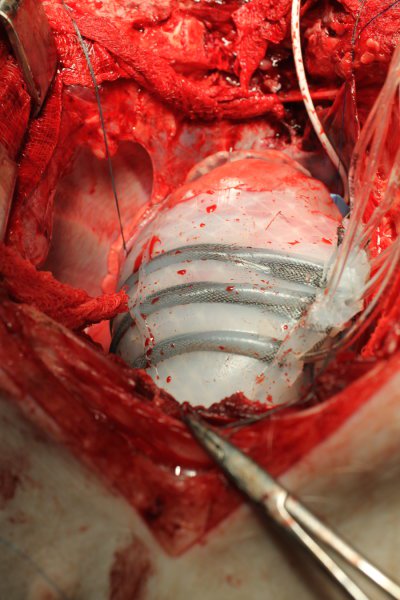Harvard University and Boston Children's Hospital researchers have developed a customizable soft robot that fits around a heart and helps it beat, potentially opening new treatment options for people suffering from heart failure.
The soft robotic sleeve twists and compresses in synch with a beating heart, augmenting cardiovascular functions weakened by heart failure. Unlike currently available devices that assist heart function, Harvard's soft robotic sleeve does not directly contact blood. This reduces the risk of clotting and eliminates the need for a patient to take potentially dangerous blood thinner medications. The device may one day be able to bridge a patient to transplant or to aid in cardiac rehabilitation and recovery.
This research demonstrates that the growing field of soft robotics can be applied to clinical needs and potentially reduce the burden of heart disease and improve the quality of life for patients. The research, published in Science Translational Medicine.
This work represents an exciting proof of concept result for this soft robot, demonstrating that it can safely interact with soft tissue and lead to improvements in cardiac function. Heart failure affects 41 million people worldwide. Today, some of the options to treat it are mechanical pumps called ventricular assist devices (VADs), which pump blood from the ventricles into the aorta, and heart transplant. While VADs are continuously improving, patients are still at high risk for blood clots and stroke.
To create an entirely new device that doesn't come into contact with blood, Harvard researchers took inspiration from the heart itself. The thin silicone sleeve uses soft pneumatic actuators placed around the heart to mimic the outer muscle layers of the mammalian heart. The actuators twist and compress the sleeve in a similar motion to the beating heart.
The device is tethered to an external pump, which uses air to power the soft actuators. The sleeve can be customized for each patient, said Roche. If a patient has more weakness on the left side of the heart, for example, the actuators can be tuned to give more assistance on that side. The pressure of the actuators can also increase or decrease over time, as the patient's condition evolves.
The sleeve is attached to the heart using a combination of a suction device, sutures and a gel interface to help with friction between the device and the heart. The SEAS and Wyss engineers worked with surgeons at Boston Children's Hospital to develop the device and determine the best ways to implant the device and test it on animal models. More research needs to be done before the sleeve can be implanted in humans but the research is an important first step towards an implantable soft robot that can augment organ function
